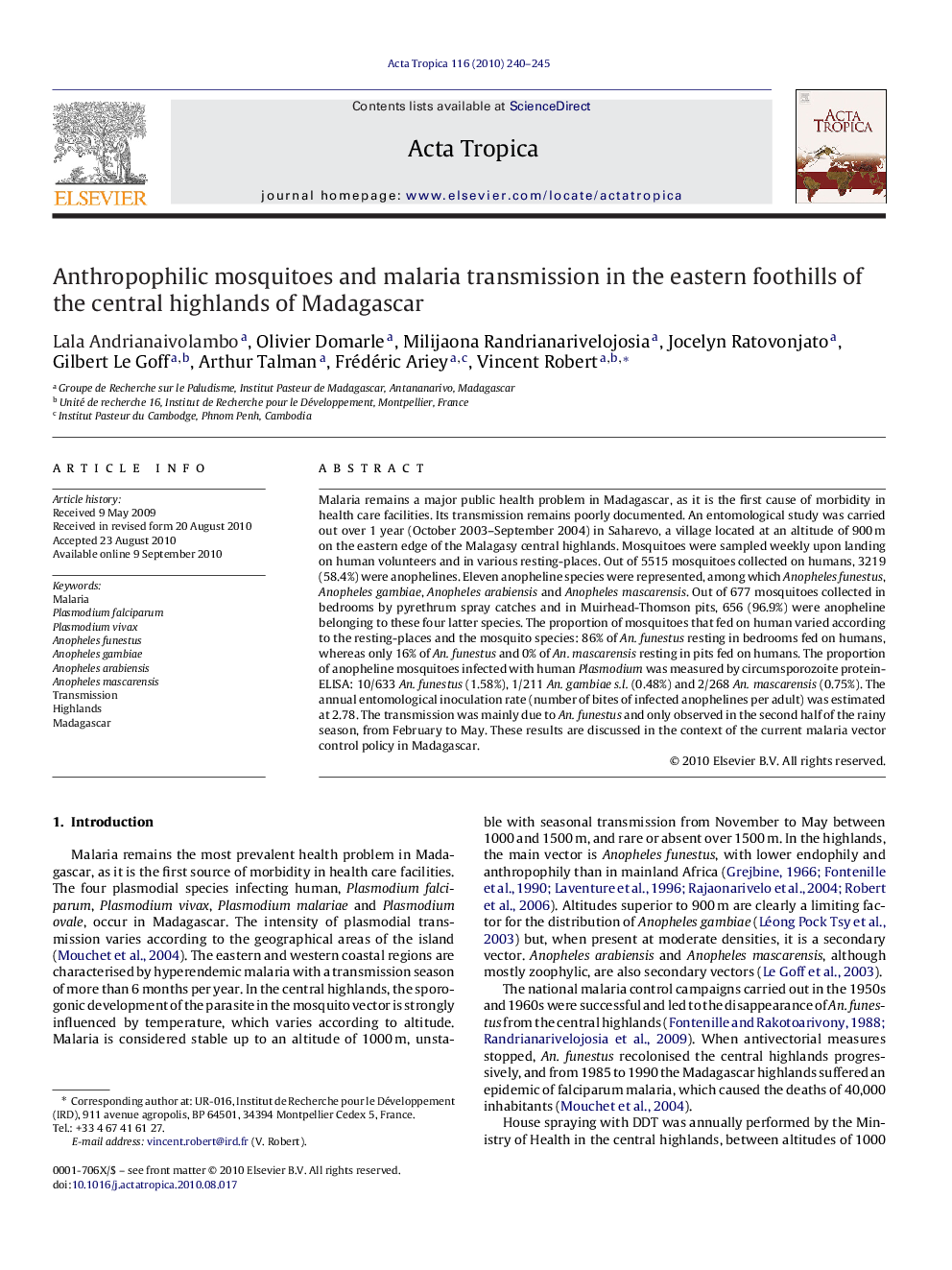| کد مقاله | کد نشریه | سال انتشار | مقاله انگلیسی | نسخه تمام متن |
|---|---|---|---|---|
| 3394040 | 1221440 | 2010 | 6 صفحه PDF | دانلود رایگان |

Malaria remains a major public health problem in Madagascar, as it is the first cause of morbidity in health care facilities. Its transmission remains poorly documented. An entomological study was carried out over 1 year (October 2003–September 2004) in Saharevo, a village located at an altitude of 900 m on the eastern edge of the Malagasy central highlands. Mosquitoes were sampled weekly upon landing on human volunteers and in various resting-places. Out of 5515 mosquitoes collected on humans, 3219 (58.4%) were anophelines. Eleven anopheline species were represented, among which Anopheles funestus, Anopheles gambiae, Anopheles arabiensis and Anopheles mascarensis. Out of 677 mosquitoes collected in bedrooms by pyrethrum spray catches and in Muirhead-Thomson pits, 656 (96.9%) were anopheline belonging to these four latter species. The proportion of mosquitoes that fed on human varied according to the resting-places and the mosquito species: 86% of An. funestus resting in bedrooms fed on humans, whereas only 16% of An. funestus and 0% of An. mascarensis resting in pits fed on humans. The proportion of anopheline mosquitoes infected with human Plasmodium was measured by circumsporozoite protein-ELISA: 10/633 An. funestus (1.58%), 1/211 An. gambiae s.l. (0.48%) and 2/268 An. mascarensis (0.75%). The annual entomological inoculation rate (number of bites of infected anophelines per adult) was estimated at 2.78. The transmission was mainly due to An. funestus and only observed in the second half of the rainy season, from February to May. These results are discussed in the context of the current malaria vector control policy in Madagascar.
Figure optionsDownload as PowerPoint slideResearch highlightsMalaria is the largest cause of morbidity registered by health care facilities in Madagascar, making it a major health problem. Its transmission remains poorly documented. An entomological study was carried from October 2003 to September 2004 in Saharevo, a village located at an altitude of 900 m on the eastern edge of the Malagasy central highlands. Mosquitoes were sampled weekly when landing on human volunteers, both indoors and outdoors, and when resting in various places. A total of 3219 of 5515 mosquitoes (58.4%) collected on volunteers were anophelines.
Journal: Acta Tropica - Volume 116, Issue 3, December 2010, Pages 240–245